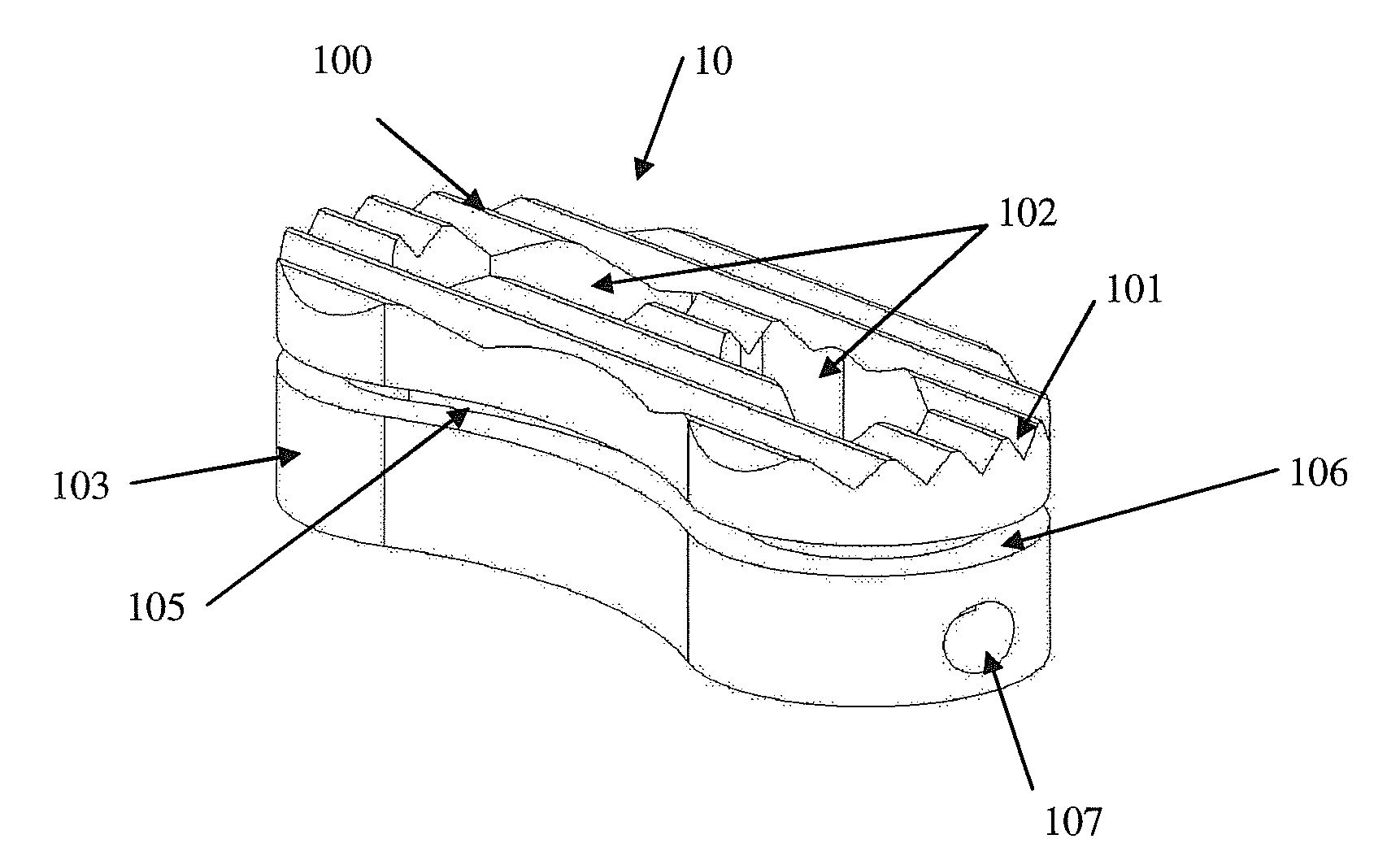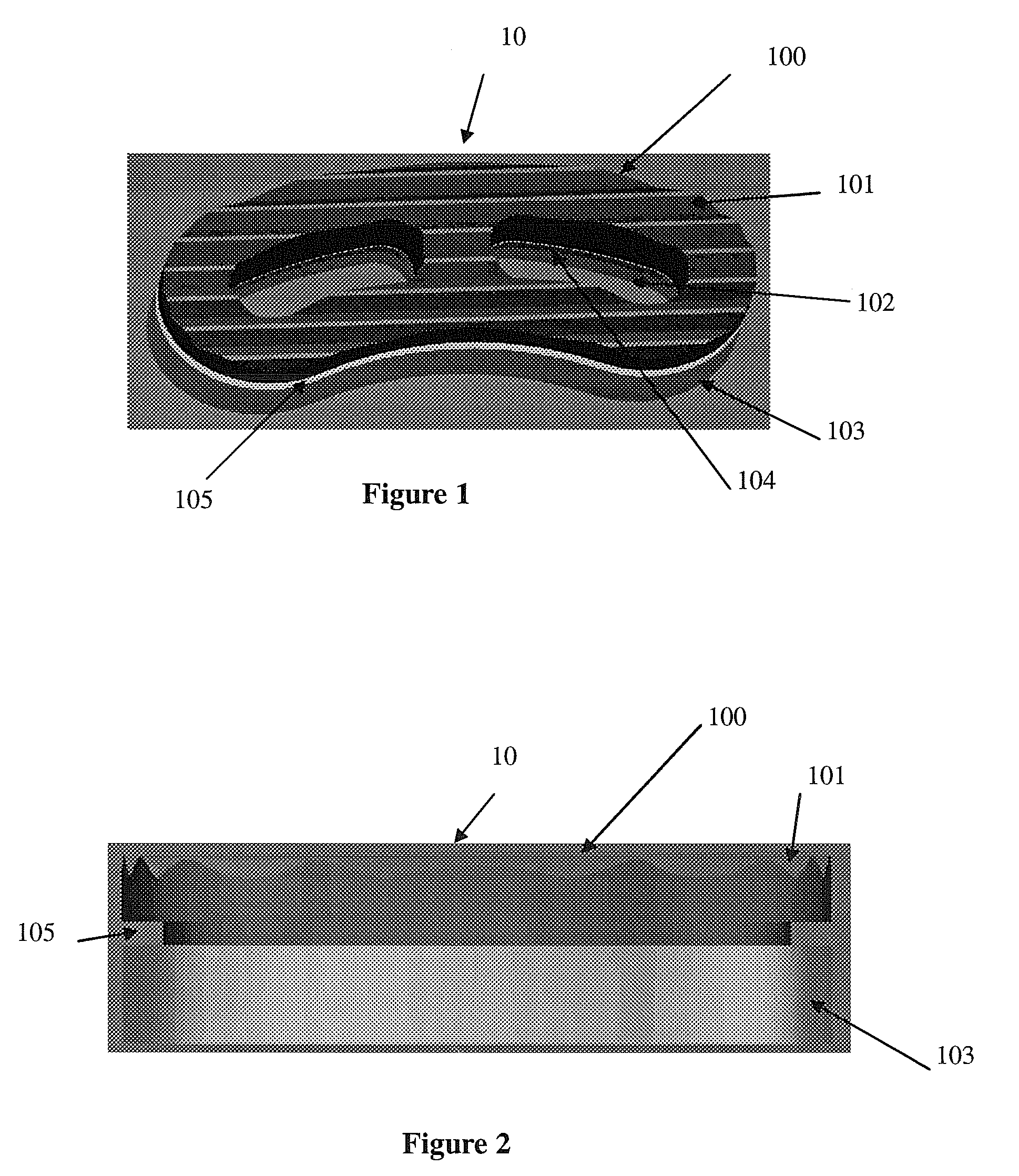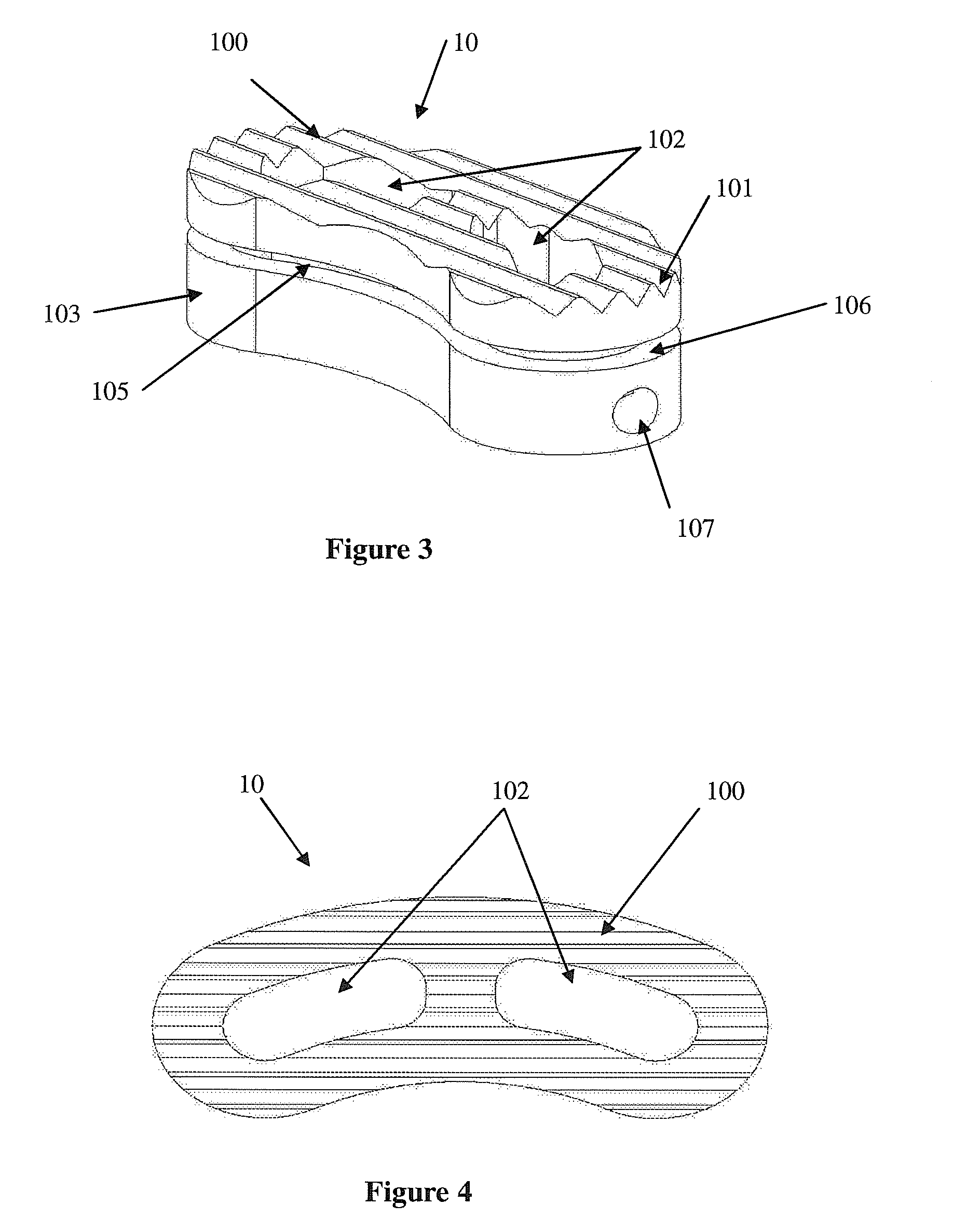Load sharing interbody fusion device
a fusion device and load-sharing technology, applied in the field of intervertebral fusion devices, can solve the problems of devices that cannot be fusioned under the high load of the spine, the rigidity of the spacer does not allow load-sharing with a bone, and the strength of materials is limited
- Summary
- Abstract
- Description
- Claims
- Application Information
AI Technical Summary
Benefits of technology
Problems solved by technology
Method used
Image
Examples
Embodiment Construction
[0034]An interbody fusion device made in accordance with the present invention is generally shown at 10 in the Figures. The device 10 generally includes an upper body section 100 which moves relative to a lower body section 103. Together, the upper and lower body sections 100, 103 provide a body mechanism for spacing apart opposing vertebral surfaces when the body mechanism is implanted therebetween. The invention is characterized by including a bone graft load sharing mechanism for sharing loads, placed on the body portions 100, 103 by the opposing vertebral surfaces, the loads being shared between the body portions 100, 103 and bone graft material contained by the body portions 100, 103. That is, loads are placed on the device 10 by the surrounding vertebral end plates that define the intervertebral space into which the device 10 is surgically placed. In prior art devices, the loads placed on the device would be totally isolated from any bone graft material contained therein. The ...
PUM
| Property | Measurement | Unit |
|---|---|---|
| height | aaaaa | aaaaa |
| resorbable | aaaaa | aaaaa |
| bioresorbable | aaaaa | aaaaa |
Abstract
Description
Claims
Application Information
 Login to View More
Login to View More - R&D
- Intellectual Property
- Life Sciences
- Materials
- Tech Scout
- Unparalleled Data Quality
- Higher Quality Content
- 60% Fewer Hallucinations
Browse by: Latest US Patents, China's latest patents, Technical Efficacy Thesaurus, Application Domain, Technology Topic, Popular Technical Reports.
© 2025 PatSnap. All rights reserved.Legal|Privacy policy|Modern Slavery Act Transparency Statement|Sitemap|About US| Contact US: help@patsnap.com



